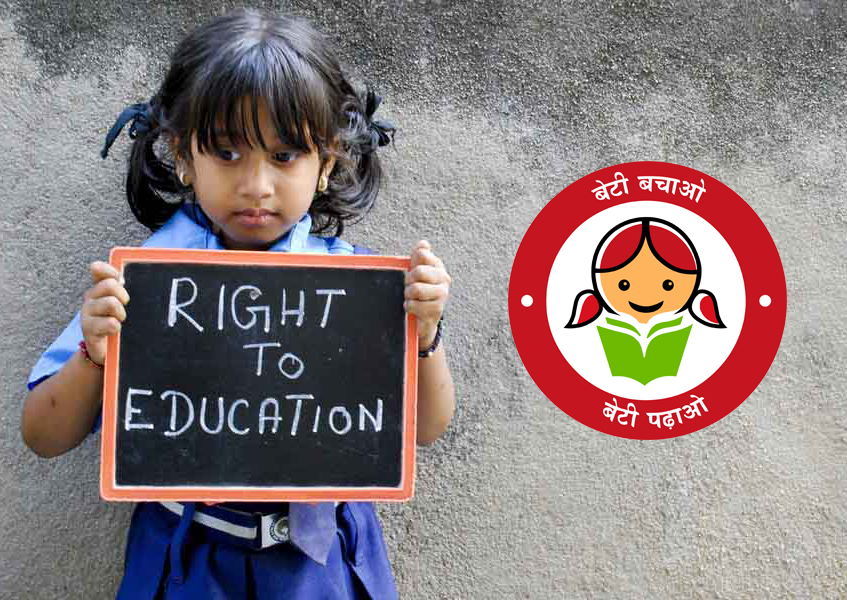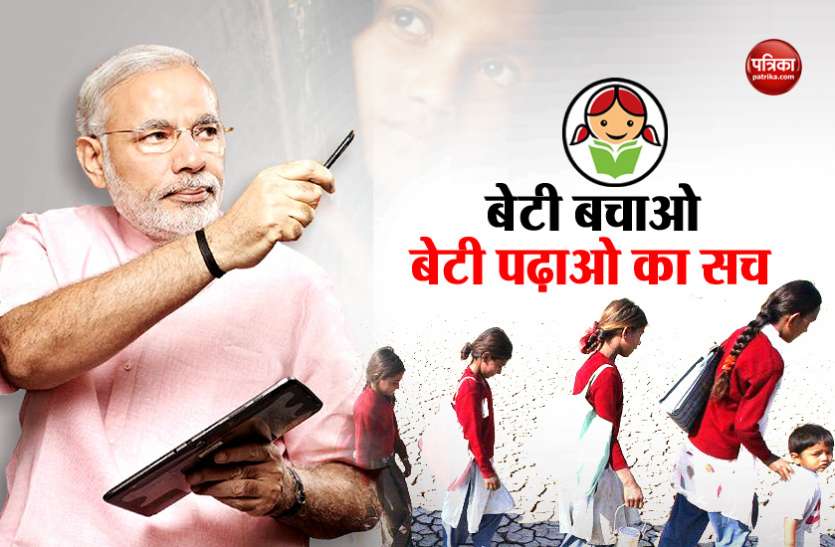Introduction
India is a country with a population of 136.64 crores as per the last data of 2019. The female to male ratio is 943 females for every 1000 males. However, this gender balance is nearly equal in many states where the male population is skewed due to certain unhealthy practices. The prevalence of sex determination before birth in many parts of the country has been to societal customs of preference for a male child. The patriarchal bias of having sons who are considered strong and who can carry forward the family’s legacy is strong in India.
On the other hand, daughter aversion is prevalent due to socio-cultural biases, which consider them as “Parai” or strangers who would get married and go away to their in-law’s home. The additional pressures of the dowry system are another significant reason for the highest number of female infanticides in the country. The scheme of “beti bachao beti padhao,” translates into “Save the daughter, educate the daughter,” is a step towards correcting those biases.

The Launch Of Beti Bachao, Beti Padhao Scheme
The government of India launched the “Beti Bachao Beti Padhao” scheme in 2015. The scheme was launched in Panipat, Haryana, by Prime Minister Narendra Modi. It was a fitting tribute to the girl child that the State of Haryana was chosen for the launchpad. This state had the worst sex ratio of 833 girls to 1000 boys and notorious for female infanticide.

The scheme’s main aim was to address the gender imbalance and remove discrimination against the girl child in Indian society. The Prime Minister aptly described that “Beta Beti, Ek samaan,” meaning sons and daughters are equal. He urged the citizens to sow five plants when a daughter is born.
The Beti Bachao, Beti Padhao Scheme Scheme
The scheme makes the citizens of the country know the importance of girls in society through a sustained social awareness campaign. This scheme is meant to address the declining sex ratio of females compared to males and other women empowerment issues. The scheme comes under the Ministries of Women and Child Development, Human resource development, and Heath and Family welfare. Sakshi Malik, the Bronze medallist in wresting in the Olympics 2016, was appointed as the brand ambassador of this scheme.

The Rs.100 crore schemes aimed to bring about a transformational shift in how Indian society views the girl child. With nearly 50% of the population being female, the country’s development is dependent on empowering women through education, equal right, facilities, and opportunities.
The support the beti bachao beti padhao yojana, the government of India launched another program called the Sukanya Sam Riddhi Yojana. The program was meant to provide better education, safety, and protection in the future and reduce the load on parents. The parents need to deposit some money in the bank every month, which will be used in the future for the daughter’s education or marriage.
Initiatives Taken For Beti Bachao Beti Padhao Scheme

The scheme is expected to bring about positive changes in the status of women in India. Since this is a Government of India initiative, the objectives, strategies, and structure are well thought out and planned. The scheme was chosen for action in the first phase in about 100 districts, having low CSR (corporate social responsibility). To create a social awareness campaign to reach out to the communities, various activities were organized with participation from schools and government employees.
Some of the local initiatives undertaken were in the Pithoragarh district were undertaken at various levels. District and block task force was constituted. Meetings and road maps, street plays, and rallies were organized as part of the social awareness campaign. Street plays were organized in villages and in markets to make the people aware of sex determination and abortion problems. Focussing on save girl child and highlighting through a series of storytelling to the villagers about the difficulties a girl child goes through in her life span was held in street corners.
The beti bachao beti padhao yojana message aim was spreading awareness through signature campaigns. The widespread use of posters on save girl children and educating girls on PG colleges was undertaken. Signature campaigns and pledge-taking ceremonies were held to bring about a change in the mindset of the people.
Ever since the Beti Bachao, Beti Padhao scheme, was launched, operations of district action plans in many states were started. These programs imparted training to front-line workers and district-level officers. Capacity-building training programs are held to increase and strengthen the capacities of the ground-level teams.
Achievements, Hurdles, And Benefits Of Beti Bachao, Beti Padhao Scheme
-
Benefits
- The aim is to make girls independent socially and financially.
- Through this scheme create awareness towards women issues.
- Improve efficiency in the implementation of welfare services meant for women.
-
Achievements
- Increase in the sex ratio of female to male within two years of the scheme launch. It is now 950+ females to 1000 males.
- Opening up of deposit schemes in post offices for girls carrying the highest interest rate @8.10 % per annum.
- Increase in women police officers from 6% to 8.5%.
- Stress on quality education and encouragement to parents to send their daughters to school.
-
Hurdles
- Orthodox rituals, social abuses, child marriages, and female infanticide hinder the implementation of beti bachao beti padhao yojana. Dowry system is another major hindrance to the successful implementation of the scheme.
- Atrocities against girl children and women continue. Crimes against women have not diminished. The police officials and other government machinery have not been entirely successful in eliminating atrocities against women.
- The mindset of the majority of the population is still conservative despite the save girl child and other social awareness campaigns done regularly.
The Future Outlook Of Beti Bachao, Beti Padhao Scheme

India’s populations are expected to increase to 152 crores (1.52 billion) by 2036. Also, the female population will grow and come nearer to the male population as per projections made by the National Commission of population. The scheme has already yielded results in two years, with the female sex ratio increasing from 943 to 950. By 2036, the female sex ratio is expected to go up to 957, clearly a positive sign and success of the Beti Bachao, Beti Padhao scheme.
The improved sex ratio by 2036 will be another indicator of gender equality. Though sex determinations are banned in cities, it is still practiced in smaller towns and villages. The prevalence of such practices is expected to go down through increased social awareness campaigns and rising opportunities for women in different fields.
Conclusion
The Beti Bachao Beti Padhao project is a challenge undertaken by the government of India to abolish the orthodox mindset of the largely patriarchal Indian society. There is a proverb that: when you educate a man, you educate the individual, but when you educate a woman, then you educate an entire generation. The scheme social awareness message to parents of girl child is clear- Celebrate the birth of your daughter and do not be unhappy.


